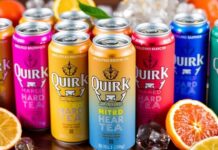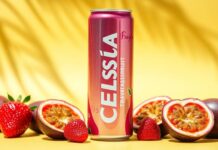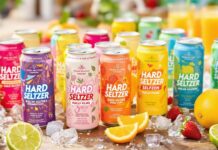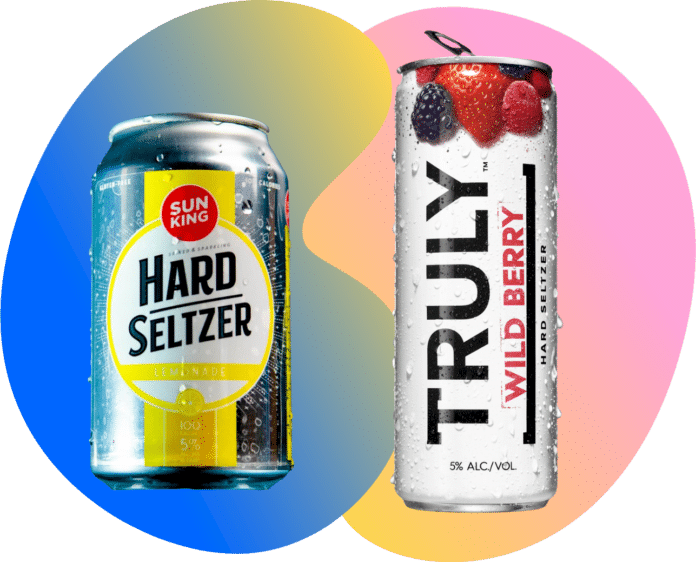What comes to mind when you think of a hard seltzer or spiked seltzer? For many consumers who were early adopters, the product is associated with the tall, skinny, usually white or pastel colored aluminum can with vibrant colors.
Early brand leaders White Claw and Truly set the aesthetic standard that’s been followed by everyone from Bud Light to Smirnoff. When Labatt and Jose Cuervo launched their own seltzers earlier this month, they did so in the skinny cans to which we’ve grown so accustomed of our alcoholic waters.
Perhaps by choosing the long, skinny can, brewers are hoping to convey something about the product it contains. Many consumers favor hard seltzer because it’s a lighter, healthier alternative to sugar- and carb-laden beer and wine, and it contains less alcohol than may options.
At around 100 calories per can and five percent alcohol, alcoholic bubbly water is a sustainable session drink that doesn’t weigh you down like beer or make you sleepy like wine. Through selling it in that iconic skinny can, are brands like White Claw and Truly suggesting that their beverage is enjoyed by people who – like the cans themselves – are also long and lean?
The unique shape at least conveys that this distinct can contains something a bit more exotic and special than your standard beer, with its excessive sugars, carbs, and heavier mouth feel.
Yet as more distillers and craft beer brewers move into the hard seltzer space, they’re challenging the perception of the skinny can by releasing premium, craft seltzers in traditional, koozie-sized squatty cans. They’re changing not only what the ingredients of sparkling alcohol look like, but the packaging, too.
Part of this decision is pragmatic. As beer loses more and more of its market share to hard seltzer, expansion is becoming an economic necessity. And adding a hard seltzer to one’s portfolio requires relatively little overhead, as most brewers and distillers already own the necessary equipment – including traditionally beer sized cans and canning equipment.
Converting to the tall, skinny “seltzer” shaped package can be expensive. If the goal is to roll out a new product in order to meet changing consumer tastes and stay relevant in the industry with as little overhead as possible, different cans are a want, not a need. But they also speak volumes about what’s inside.
The standard “beer can” package could serve to draw in other demographics, such as men who are more likely to dip their toe in the spiked water if it comes in a more traditional vessel.
Indiana’s Sun King Brewery recently released their own hard seltzer, available in traditional 12-ounce squatty cans. For co-founder Dave Colt, sleek, skinny cans didn’t make fiscal sense.
“That’s a big investment, and it’s still a pandemic,” Colt said. “We have to keep a close eye on money.”
But Colt is hoping Sun King’s product speaks for itself. “We’re over here saying, ‘Hey, we’re nice local folks and we’re making a product that we think you’re going to enjoy. So give it a try,” says Colt.
Now that the tall, skinny can is synonymous with hard seltzer, to do something different sets one apart. For instance, some brewery taprooms sell hard seltzer by the growler.
Will we see brands branch out beyond aluminum cans? Will hard seltzer perhaps come in glass bottles next? As the market continues to evolve and challenge our perceptions of what constitutes hard seltzer, it is exciting to see where brands take us.
- Molson Coors Increases NA Foothold with La Colombe Coffee - September 15, 2021
- Half Time Beverage Adds Seltzer and Canned Cocktails Gift Packs - September 14, 2021
- Coming Soon: Great Lakes Agave Twist Ranch Water - September 13, 2021














